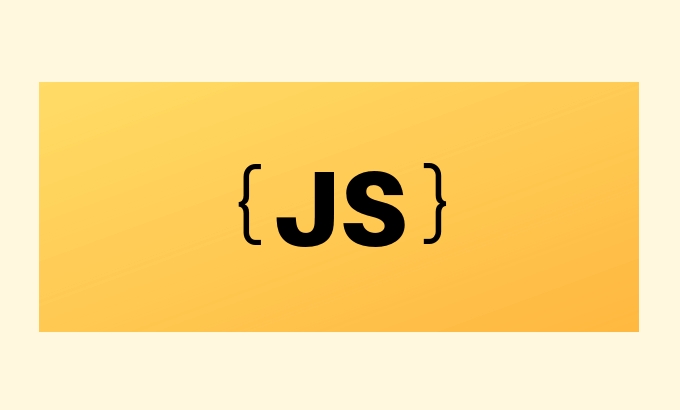To create a WebSocket connection, you need to use new WebSocket('wss://example.com/socket'); 2. Listen to onopen, onmessage, onerror and onclose events to handle the connection life cycle; 3. Send data through socket.send(), and use JSON.stringify() when sending objects; 4. When receiving messages, you need to parse and process data, and you need to capture parsing errors; 5. You can call socket.close() to manually close the connection; 6. To implement the reconnect mechanism to deal with network interruptions, it is recommended to adopt an exponential backoff strategy; 7. The server needs to support WebSocket, such as Node.js' ws library; Summary: WebSocket It realizes two-way communication between the client and the server, which is suitable for real-time scenarios. Connections, messages, errors and reconnections need to be properly handled to ensure stability.

Using WebSockets in JavaScript allows you to establish a persistent, two-way communication channel between a client (like a browser) and a server. This is especially useful for real-time features like chat apps, live notifications, or live data updates.

Here's how to use WebSockets in JavaScript, step by step:
? 1. Create a WebSocket Connection
To start, you create a new WebSocket object by providing the server's WebSocket URL. It usually starts with ws:// (unencrypted) or wss:// (secure, like HTTPS).

const socket = new WebSocket('wss://example.com/socket');
? Use
wss://in production for security (encrypted connection).
? 2. Handle Connection Events
WebSockets have several event handlers to manage the lifecycle:

-
onopen– when the connection is established -
onmessage– when a message is received from the server -
onerror– when an error occurs -
onclose– when the connection closes
socket.onopen = function(event) {
console.log('Connected to the WebSocket server');
// Optionally send a message right after connecting
socket.send('Hello Server!');
};
socket.onmessage = function(event) {
console.log('Message from server:', event.data);
// Handle incoming data (can be string, JSON, etc.)
};
socket.onerror = function(error) {
console.error('WebSocket error:', error);
};
socket.onclose = function(event) {
console.log('Connection closed', event);
};? 3. Send Data to the Server
Once the connection is open, use the send() method to transmit data:
// Send a string
socket.send('Hi there!');
// Or send JSON data
const message = {
type: 'chat',
user: 'Alice',
text: 'Hello!'
};
socket.send(JSON.stringify(message));? Always use
JSON.stringify()when sending objects.
? 4. Receiving and Parsing Messages
The server might send structured data (like JSON). Always validate before parsing:
socket.onmessage = function(event) {
try {
const data = JSON.parse(event.data);
console.log('Parsed data:', data);
// Process based on message type
if (data.type === 'chat') {
displayChatMessage(data.user, data.text);
}
} catch (e) {
// Not JSON – treat as plain text
console.log('Raw message:', event.data);
}
};? 5. Close the Connection (Optional)
You can close the connection manually when needed:
socket.close();
You can also pass a code and reason:
socket.close(1000, 'Normal closure');
? 6. Reconnection Strategy (Recommended)
WebSockets can drop due to network issues. A simple reconnection loop helps:
let socket;
let retries = 0;
const maxRetries = 5;
function connect() {
socket = new WebSocket('wss://example.com/socket');
socket.onopen = () => {
console.log('Connected');
retries = 0; // Reset retries on success
};
socket.onclose = () => {
if (retries < maxRetries) {
retries ;
console.log(`Reconnecting... (${retries})`);
setTimeout(connect, 3000 * retries); // Exponential backoff
} else {
console.error('Max reconnection attempts reached');
}
};
socket.onerror = (error) => {
console.error('WebSocket error:', error);
};
}
connect();? 7. Server-Side Note
You'll need a backend that supports WebSockets. Common options include:
- Node.js with
wsorSocket.IO - Python with
websocketsorSocket.IO - Go, Java, or other backends with WebSocket libraries
Example using Node.js ws :
const WebSocket = require('ws');
const wss = new WebSocket.Server({ port: 8080 });
wss.on('connection', (ws) => {
ws.on('message', (message) => {
console.log('Received:', message);
ws.send(`Echo: ${message}`);
});
ws.send('Welcome!');
});Summary
WebSockets are simple to use in JavaScript:
- Use
new WebSocket(url)to connect - Listen to
onopen,onmessage,onerror,onclose - Use
.send()to send messages - Parse incoming data safely
- Add reconnection logic for reliability
It's not complex, but it's powerful when you need real-time updates. Just remember to handle errors and disconnections gracefully.
Basically, that's all you need to get started with WebSockets in JavaScript.
The above is the detailed content of How to use WebSockets in JavaScript?. For more information, please follow other related articles on the PHP Chinese website!

Hot AI Tools

Undress AI Tool
Undress images for free

Undresser.AI Undress
AI-powered app for creating realistic nude photos

AI Clothes Remover
Online AI tool for removing clothes from photos.

Clothoff.io
AI clothes remover

Video Face Swap
Swap faces in any video effortlessly with our completely free AI face swap tool!

Hot Article

Hot Tools

Notepad++7.3.1
Easy-to-use and free code editor

SublimeText3 Chinese version
Chinese version, very easy to use

Zend Studio 13.0.1
Powerful PHP integrated development environment

Dreamweaver CS6
Visual web development tools

SublimeText3 Mac version
God-level code editing software (SublimeText3)
 How to make an HTTP request in Node.js?
Jul 13, 2025 am 02:18 AM
How to make an HTTP request in Node.js?
Jul 13, 2025 am 02:18 AM
There are three common ways to initiate HTTP requests in Node.js: use built-in modules, axios, and node-fetch. 1. Use the built-in http/https module without dependencies, which is suitable for basic scenarios, but requires manual processing of data stitching and error monitoring, such as using https.get() to obtain data or send POST requests through .write(); 2.axios is a third-party library based on Promise. It has concise syntax and powerful functions, supports async/await, automatic JSON conversion, interceptor, etc. It is recommended to simplify asynchronous request operations; 3.node-fetch provides a style similar to browser fetch, based on Promise and simple syntax
 JavaScript Data Types: Primitive vs Reference
Jul 13, 2025 am 02:43 AM
JavaScript Data Types: Primitive vs Reference
Jul 13, 2025 am 02:43 AM
JavaScript data types are divided into primitive types and reference types. Primitive types include string, number, boolean, null, undefined, and symbol. The values are immutable and copies are copied when assigning values, so they do not affect each other; reference types such as objects, arrays and functions store memory addresses, and variables pointing to the same object will affect each other. Typeof and instanceof can be used to determine types, but pay attention to the historical issues of typeofnull. Understanding these two types of differences can help write more stable and reliable code.
 React vs Angular vs Vue: which js framework is best?
Jul 05, 2025 am 02:24 AM
React vs Angular vs Vue: which js framework is best?
Jul 05, 2025 am 02:24 AM
Which JavaScript framework is the best choice? The answer is to choose the most suitable one according to your needs. 1.React is flexible and free, suitable for medium and large projects that require high customization and team architecture capabilities; 2. Angular provides complete solutions, suitable for enterprise-level applications and long-term maintenance; 3. Vue is easy to use, suitable for small and medium-sized projects or rapid development. In addition, whether there is an existing technology stack, team size, project life cycle and whether SSR is needed are also important factors in choosing a framework. In short, there is no absolutely the best framework, the best choice is the one that suits your needs.
 JavaScript time object, someone builds an eactexe, faster website on Google Chrome, etc.
Jul 08, 2025 pm 02:27 PM
JavaScript time object, someone builds an eactexe, faster website on Google Chrome, etc.
Jul 08, 2025 pm 02:27 PM
Hello, JavaScript developers! Welcome to this week's JavaScript news! This week we will focus on: Oracle's trademark dispute with Deno, new JavaScript time objects are supported by browsers, Google Chrome updates, and some powerful developer tools. Let's get started! Oracle's trademark dispute with Deno Oracle's attempt to register a "JavaScript" trademark has caused controversy. Ryan Dahl, the creator of Node.js and Deno, has filed a petition to cancel the trademark, and he believes that JavaScript is an open standard and should not be used by Oracle
 Handling Promises: Chaining, Error Handling, and Promise Combinators in JavaScript
Jul 08, 2025 am 02:40 AM
Handling Promises: Chaining, Error Handling, and Promise Combinators in JavaScript
Jul 08, 2025 am 02:40 AM
Promise is the core mechanism for handling asynchronous operations in JavaScript. Understanding chain calls, error handling and combiners is the key to mastering their applications. 1. The chain call returns a new Promise through .then() to realize asynchronous process concatenation. Each .then() receives the previous result and can return a value or a Promise; 2. Error handling should use .catch() to catch exceptions to avoid silent failures, and can return the default value in catch to continue the process; 3. Combinators such as Promise.all() (successfully successful only after all success), Promise.race() (the first completion is returned) and Promise.allSettled() (waiting for all completions)
 What is the cache API and how is it used with Service Workers?
Jul 08, 2025 am 02:43 AM
What is the cache API and how is it used with Service Workers?
Jul 08, 2025 am 02:43 AM
CacheAPI is a tool provided by the browser to cache network requests, which is often used in conjunction with ServiceWorker to improve website performance and offline experience. 1. It allows developers to manually store resources such as scripts, style sheets, pictures, etc.; 2. It can match cache responses according to requests; 3. It supports deleting specific caches or clearing the entire cache; 4. It can implement cache priority or network priority strategies through ServiceWorker listening to fetch events; 5. It is often used for offline support, speed up repeated access speed, preloading key resources and background update content; 6. When using it, you need to pay attention to cache version control, storage restrictions and the difference from HTTP caching mechanism.
 Leveraging Array.prototype Methods for Data Manipulation in JavaScript
Jul 06, 2025 am 02:36 AM
Leveraging Array.prototype Methods for Data Manipulation in JavaScript
Jul 06, 2025 am 02:36 AM
JavaScript array built-in methods such as .map(), .filter() and .reduce() can simplify data processing; 1) .map() is used to convert elements one to one to generate new arrays; 2) .filter() is used to filter elements by condition; 3) .reduce() is used to aggregate data as a single value; misuse should be avoided when used, resulting in side effects or performance problems.
 JS roundup: a deep dive into the JavaScript event loop
Jul 08, 2025 am 02:24 AM
JS roundup: a deep dive into the JavaScript event loop
Jul 08, 2025 am 02:24 AM
JavaScript's event loop manages asynchronous operations by coordinating call stacks, WebAPIs, and task queues. 1. The call stack executes synchronous code, and when encountering asynchronous tasks, it is handed over to WebAPI for processing; 2. After the WebAPI completes the task in the background, it puts the callback into the corresponding queue (macro task or micro task); 3. The event loop checks whether the call stack is empty. If it is empty, the callback is taken out from the queue and pushed into the call stack for execution; 4. Micro tasks (such as Promise.then) take precedence over macro tasks (such as setTimeout); 5. Understanding the event loop helps to avoid blocking the main thread and optimize the code execution order.






